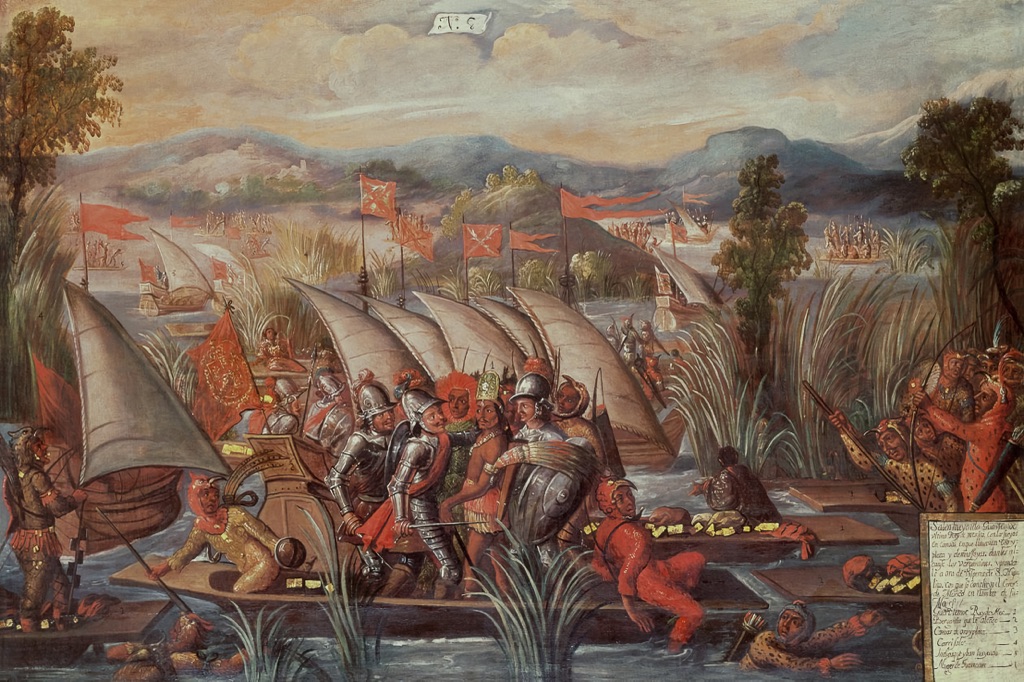The Last Aztec Emperor: Cuauhtémoc
Cuauhtémoc, also known as Cuauhtemotzín, Guatimozín, or Guatémoc, was the final Aztec Emperor, ruling Tenochtitlan from 1520 to 1521 AD. His name, meaning “one who has descended like an eagle,” symbolizes aggressiveness and determination, qualities that defined his brief but significant reign.
Get your dose of History via Email
Ascension to Power
Cuauhtémoc, born to Emperor Ahuitzotl, emerged as a prominent figure in Aztec history upon his ascension to the throne at approximately 25 years of age. His rise came during a tumultuous period marked by the Spanish siege of Tenochtitlan and a devastating smallpox epidemic introduced by the Spanish. Following the death of his predecessor and cousin, Moctezuma II, and Moctezuma’s brother Cuitláhuac, Cuauhtémoc was elected tlatoani by the highest noblemen, a testament to his perceived ability to lead amidst crisis.
Rule and Resistance
Under Cuauhtémoc’s leadership, Tenochtitlan mounted a defense against the Spanish invaders and their indigenous allies. Despite the isolation and the overwhelming odds, Cuauhtémoc called for reinforcements to defend the city. His capture on August 13, 1521, while attempting to flee across Lake Texcoco, marked the end of Aztec resistance. Despite his surrender, Spanish sources recount his dignified request to Hernán Cortés to be killed, a request that Cortés refused, allegedly out of respect for Cuauhtémoc’s valor.
Captivity and Execution
Following his capture, Cuauhtémoc was subjected to torture and eventually executed in 1525 under Cortés’s orders, based on allegations of conspiracy. The accounts of his execution vary, with some sources suggesting it was unjust and based on fabricated evidence. His death symbolized the definitive end of the Aztec Empire.
Legacy and Controversy
Cuauhtémoc’s legacy is a complex one, embodying the resistance against Spanish conquest and the tragic end of the Aztec civilization. His remains, purportedly discovered in Ixcateopan, Guerrero, became the center of a controversy regarding their authenticity, reflecting the ongoing debate over his legacy and the desire to find symbols of indigenous resilience.
Conclusion
Cuauhtémoc’s reign, though brief, left an indelible mark on the history of the Aztec Empire and its downfall. His life and legacy continue to be celebrated and debated, symbolizing the enduring spirit of resistance against colonization and the tragic consequences of the clash between two worlds.
Sources:
Wikipedia

